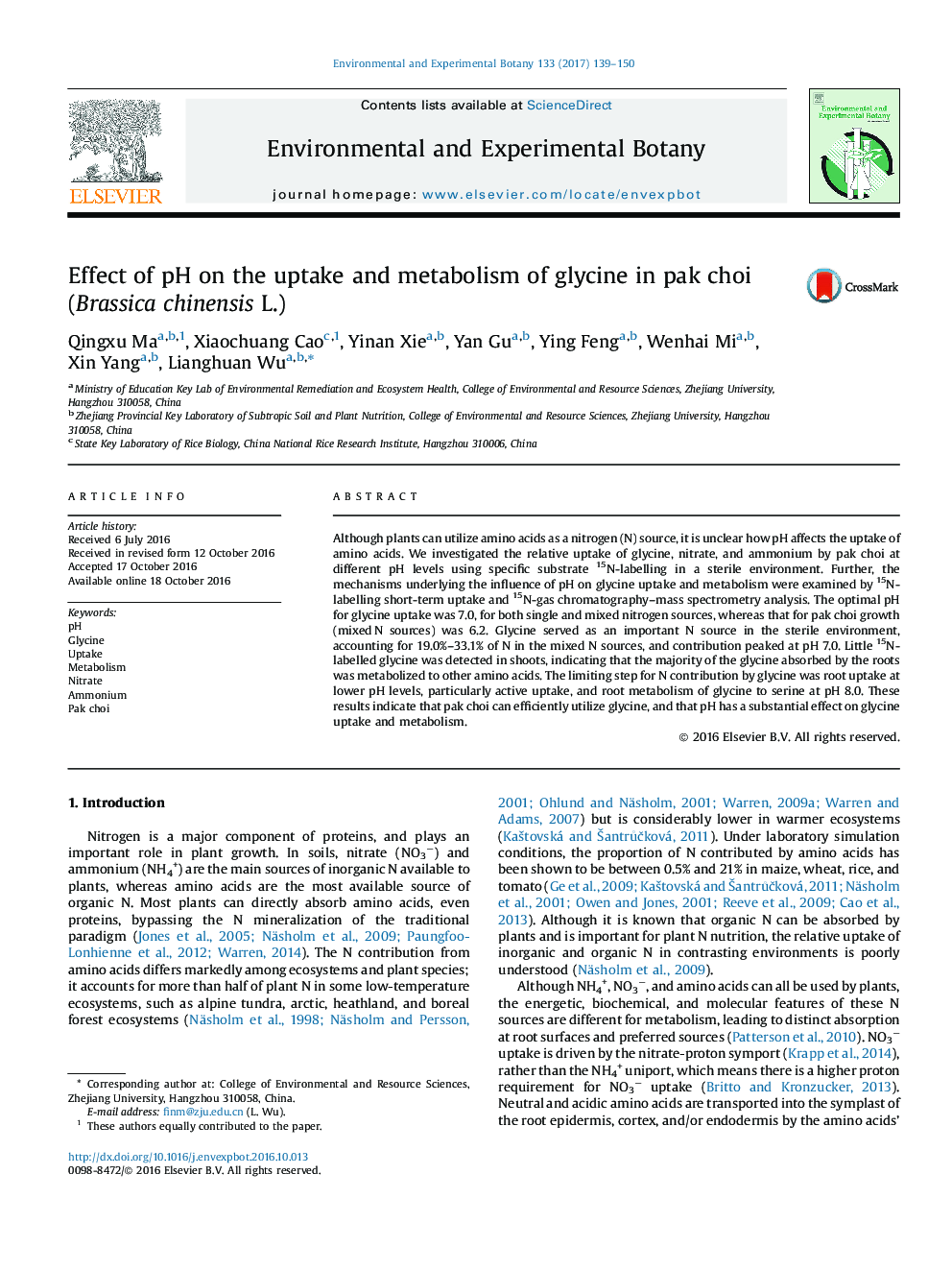| Article ID | Journal | Published Year | Pages | File Type |
|---|---|---|---|---|
| 6388828 | Environmental and Experimental Botany | 2017 | 12 Pages |
Abstract
Although plants can utilize amino acids as a nitrogen (N) source, it is unclear how pH affects the uptake of amino acids. We investigated the relative uptake of glycine, nitrate, and ammonium by pak choi at different pH levels using specific substrate 15N-labelling in a sterile environment. Further, the mechanisms underlying the influence of pH on glycine uptake and metabolism were examined by 15N-labelling short-term uptake and 15N-gas chromatography-mass spectrometry analysis. The optimal pH for glycine uptake was 7.0, for both single and mixed nitrogen sources, whereas that for pak choi growth (mixed N sources) was 6.2. Glycine served as an important N source in the sterile environment, accounting for 19.0%-33.1% of N in the mixed N sources, and contribution peaked at pH 7.0. Little 15N-labelled glycine was detected in shoots, indicating that the majority of the glycine absorbed by the roots was metabolized to other amino acids. The limiting step for N contribution by glycine was root uptake at lower pH levels, particularly active uptake, and root metabolism of glycine to serine at pH 8.0. These results indicate that pak choi can efficiently utilize glycine, and that pH has a substantial effect on glycine uptake and metabolism.
Related Topics
Life Sciences
Agricultural and Biological Sciences
Ecology, Evolution, Behavior and Systematics
Authors
Qingxu Ma, Xiaochuang Cao, Yinan Xie, Yan Gu, Ying Feng, Wenhai Mi, Xin Yang, Lianghuan Wu,
